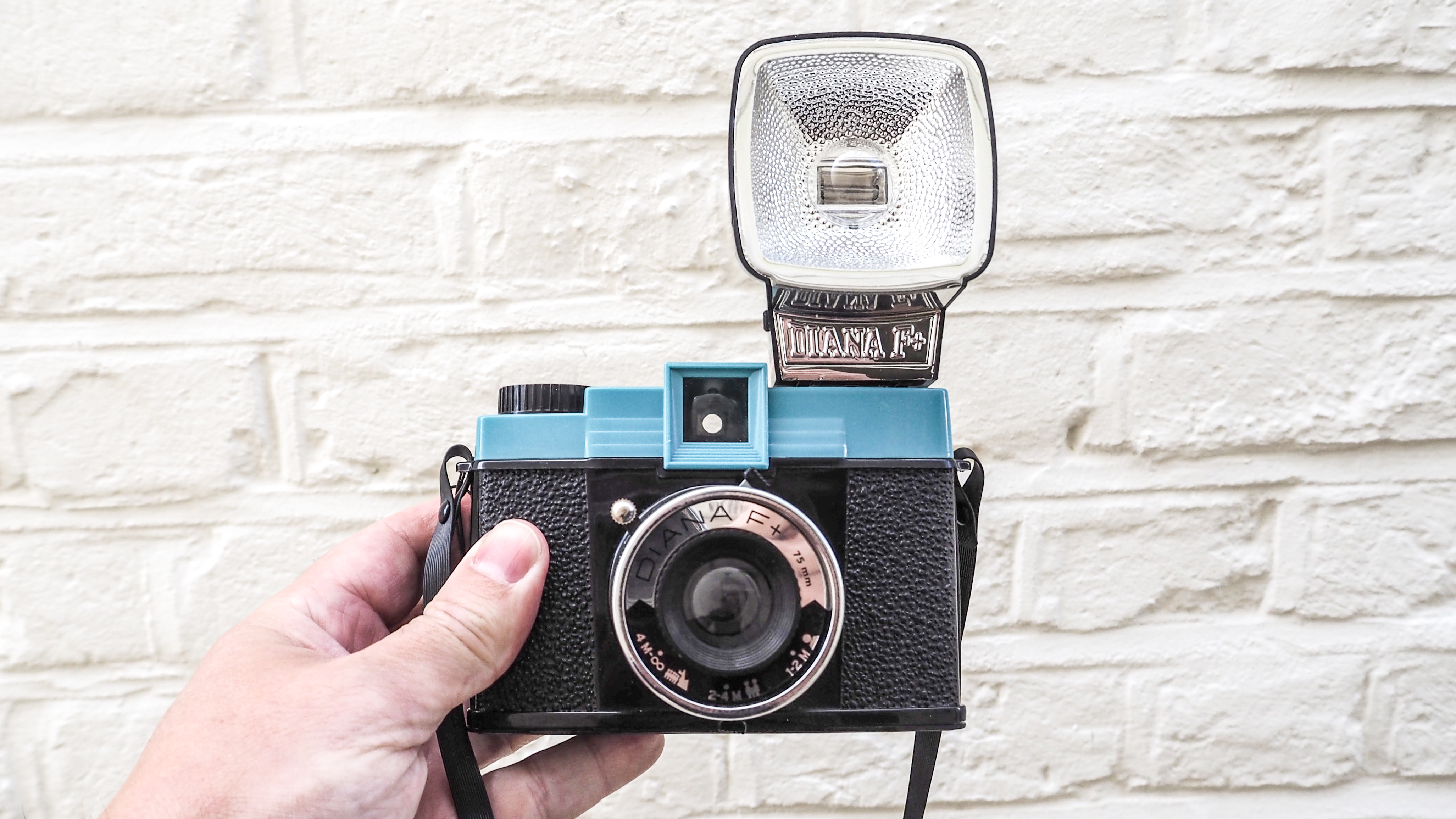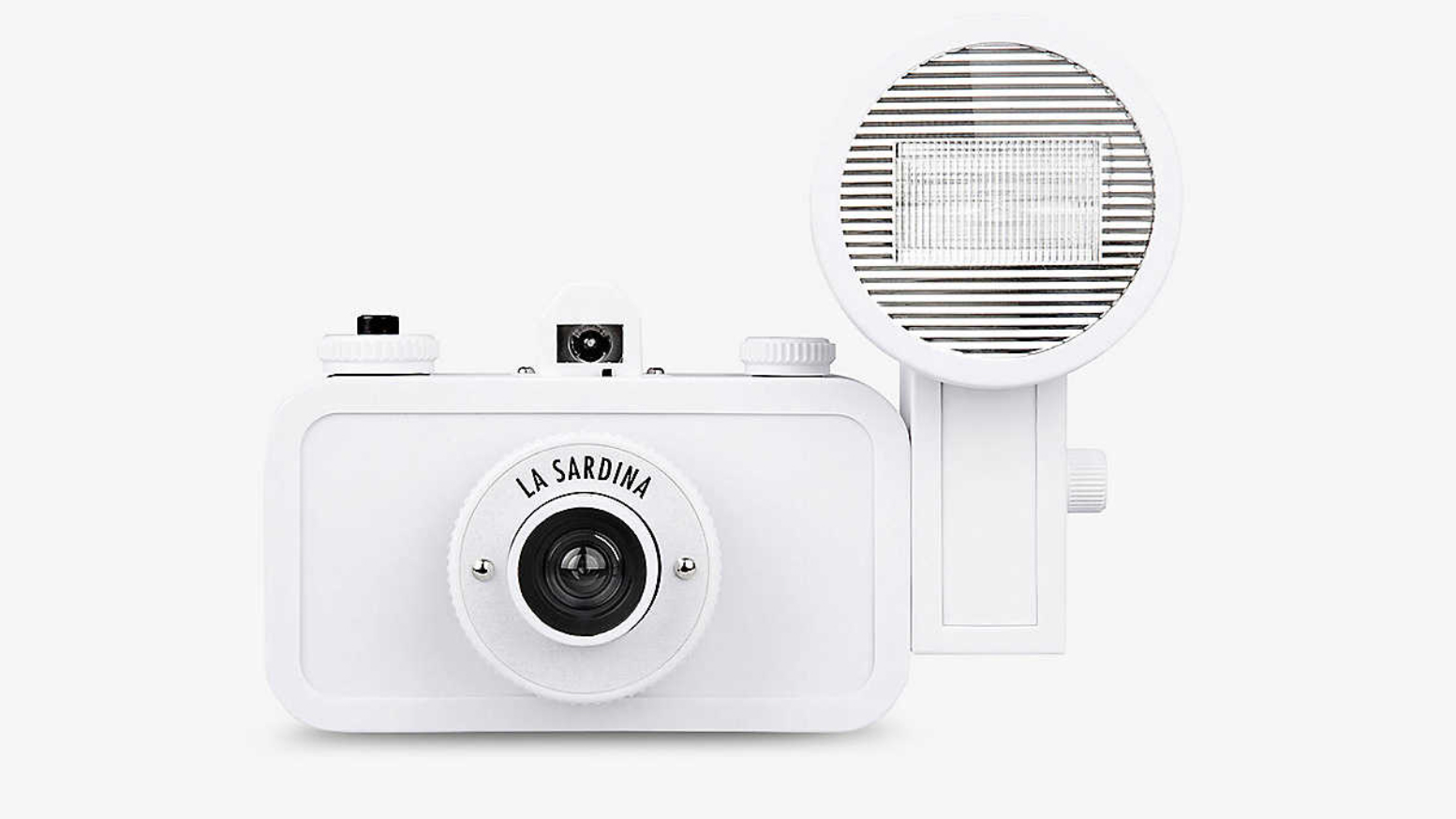Best Lomography camera: the top Lomo cameras for analog film fans
We pick the best Lomography cameras to buy right now for instant, 35mm and 120 medium format film

The best Lomography cameras are a way to enjoy a more tactile, analogue photographic experience. Embracing imperfection and lo-fi aesthetic rather than chasing pixels, Lomography cameras have a dedicated fanbase, and encompass many different types of film for all sorts of creative looks. It's great for choice, but can make it all the harder to pick which one is right for you!
If you're a bit sick of seeing shelves of black cameras and near-identical lenses, Lomography provides a welcome change of pace. The range certainly isn't perfect, and you may find your time with a Lomo camera marred by occasionally wishing you had just a bit more technical control over your image, but it's fun and adventurous, and the world of photography would be all the poorer without it.
So, where to begin? We've picked out our selections of the best Lomography cameras available right now, a mix of models new and old. We've also found all the best prices and deals from retailers across the globe…
1. Lomo'instant wide
Specifications
Reasons to buy
Reasons to avoid
Using a Lomo camera doesn’t have to involve wondering where to get your film processed, as, capitalising on the success of Fuji’s Instax camera and film range, Lomography itself now offers instant camera alternatives. This option’s a close rival to Fuji’s Instax Wide 300, thanks to the wider format prints it outputs and the four AA batteries required for power. The viewfinder here is in a different location compared to its near Fujifilm doppelganger, but it’s still relatively bulky with limited controls. We do, however, get dedicated buttons for disabling the flash and adjusting exposure between +/- 1EV. The best results are to be had with the exposure dialled down and flash disabled. Complete with selfie mirror on the front and a large ridged lever for the shutter release, a lens ring allows for the focal distance to be dialled in between 0.6 metres and infinity. Bond ally ‘Q’ must have had a hand in the design here, as the lens cap houses a CR2025E lithium cell that allows it to double as a remote. Clever!
Specifications
Reasons to buy
Reasons to avoid
Brightly colored plastic shells and features pared back to the minimum – meaning that all you really need to do (or can do) is point and shoot – all the hallmarks of a Lomo camera are present and correct here, including the fact that you need lighting conditions just right to be able to take a picture. That said, there’s now a version of the Diana F+ with the option to clip on a flash, which adds a degree of flexibility. Core features include three-position zone focusing, only one shutter speed (1/60 sec) plus apertures linked to lighting conditions, including pinhole, f/8, f/11, f/16. So, to a degree, it’s as much as case here of ‘point and hope’ as anything. While the core Diana F+ camera is very affordable, there is a boxed accessory kit for those who want to branch out and experiment even more. Don’t be too disappointed by the at times crude results you’ll get – the hit and miss nature is all part of the Lomography charm.
See our full Lomography Diana F+ review





3. Lomography LC-Wide 35mm
Specifications
Reasons to buy
Reasons to avoid
For when you want to squeeze absolutely everything into your frame there’s this ultra wide option – that’s also commendably portably pocket friendly – for deriving that heavily vignetted, super saturated and inevitably slightly fuzzy Lomo look. The 17mm lens provided here goes wider than your standard kit lens and could be aptly described as ultra wide angle. And all from a camera that looks like it has been beamed in from the 1960s or 1970s. On this unit we get the relative luxury of automatic exposure too, with shutter speeds from 1/500 sec to infinity and an aperture range that stretches from f/4.5 to f/16. Users will need to invest in three LR44 batteries to be able to make use of this model, though that’s hardly a barrier to either purchase or creativity.
4. Lomography La Sardina
Specifications
Reasons to buy
Reasons to avoid
For those who want to try out 35mm film without overcomplicating things too much, Lomography's La Sardina camera is a solid choice (it comes in a few colours, though we like the black "8-ball" edition). Simple to load and equipped with straightforward, clearly labelled controls, the La Sardina does not exactly over-burden its user with exposure options. You're working with an f/8 lens and your shutter speed choices are twofold: 1/100sec in N mode, or Bulb. Thassit. As such, we'd recommend using films with a decent ASA speed rating (at least 400 to be on the safe side), but as long as you take this precaution you'll have plenty of fun here. The useful wind dial also makes it easy to experiment with multiple exposures, so you really have the capacity to get creative.

5. Lomography Diana Baby 110
Specifications
Reasons to buy
Reasons to avoid
A palm-of-the-hand camera for roaming shooters, the Diana Baby 110 has been around for a few years but is still a great choice for analogue shooting on the move. It takes little-used 110-format film, which you might struggle to find much of outside of Lomography's official shop, as it discontinued and all bit forgotten until the firm revived it. Analogue monopolies notwithstanding, images shot on the Diana Baby 110 look surprisingly good considering how tiny the camera is, and it's amazing that Lomography managed to pack in extra features like Bulb mode and the ability to produce multiple exposures, allowing you to add a little extra flair to your shots.
Specifications
Reasons to buy
Reasons to avoid
The idiot-proof operability of a disposable film camera, but without the waste: the Lomography Simple-Use camera is the most literal possible interpretation of point and shoot. Coming loaded with a roll of Lomography Colour Negative 400, it's an incredibly easy camera to use for a bit of lo-fi fun, and the coloured filters that can be placed over the flash to give it a tint do give the user a little creative freedom. Best of all, while it operates a lot like other disposable cameras you mightbuy, the Simple Use camera is actually reloadable with other 35mm film, so it isn't as wasteful. This camera also comes in versions pre-loaded with other types of Lomography film, including black and white or Lomochrome Purple, so there's plenty to choose from.
See our full Lomography Simple-Use Camera review
Specifications
Reasons to buy
Reasons to avoid
This is an appealing and affordable option for those looking to investigate the joys of shooting on film. The original Rocket did get replaced by a bright red 2.0 version but we can't find it on sale anywhere. Designed with one thing in mind the Sprocket Rocket captures the biggest photos possible on 35mm film with a sprocket exposing frame and a panoramic perspective. The lens has a focal length of 30mm, the aperture range is between f/10.8 and f/16 so you will definitely need to shoot with ISO400 or ISO800 film even on a sunny day. It comes with a hot-shoe mount so you can attach a flash which is recommended if you want to shoot inside.
See our full Lomography Sprocket Rocket review
8. Lomo'instant Automat
Specifications
Reasons to buy
Reasons to avoid
Lomography’s Lomo’instant Automat, Leica’s Sofort and Fuji’s SQ6 are like peas in a particularly cosy pod, in terms of size, styling and placement of key features such as viewfinder and flash, plus the ability to use Instax Mini film. Lomo’s version is powered by two harder to find CR2 batteries rather than standard AAs and is, in typically quirky fashion, powered up with a twist of the lens barrel. Operation is point and shoot all the way via a 60mm lens, boasting an aperture of f/8, located front and centre. A lens ring allows photographers to dial in a focal distance between 60cm and infinity. Nothing is wasted here: the mirrored shutter release button is placed on the front, where it also facilitates the inevitable ‘selfies’. Once again on a Lomo camera, the optical viewfinder provided is tiny – so accurate framing is tricky. Whether you choose this one or its Leica or Fujifilm equivalents will come down to personal taste – and the budget you’re working with.
Specifications
Reasons to buy
Reasons to avoid
The appeal here is being able to build your own camera utilizing the plastic kit shell provided. The upgraded version of the Konstruktor even comes with a PC socket for flash photography, though you’ll need the hot shoe adaptor in the optional accessory kit (another $20). However, we found there were a lot of plastic panels, parts, screws and springs to put together so this is one that will reward those with a degree of patience as well as constructing dexterity. Unsurprisingly, like the camera body itself, the lens here is plastic and we get another fixed focal length 50mm lens boasting an f/10 aperture. On a positive note we enjoyed using the waist level viewfinder and the through-the-lens viewing that comes courtesy of the spring loaded mirror level. Very Heath Robinson it may be, but it’s not without charm if you don’t mind putting the initial work in. See our full Lomography Konstruktor F review.
Read more:
• The best film cameras you can still buy today
• The best film for your analog camera
• Best disposable cameras
• Best instant cameras
• The best point and shoot digital cameras around right now
• Lomography Petzval 55mm f/1.7 MKII review
The best camera deals, reviews, product advice, and unmissable photography news, direct to your inbox!
Gavin has over 30 years’ experience of writing about photography and television. He is currently the editor of British Photographic Industry News, and previously served as editor of Which Digital Camera and deputy editor of Total Digital Photography.
He has also written for a wide range of publications including T3, BBC Focus, Empire, NME, Radio Times, MacWorld, Computer Active, What Digital Camera and the Rough Guide books.
With his wealth of knowledge, Gavin is well placed to recognize great camera deals and recommend the best products in Digital Camera World’s buying guides. He also writes on a number of specialist subjects including binoculars and monoculars, spotting scopes, microscopes, trail cameras, action cameras, body cameras, filters and cameras straps.








